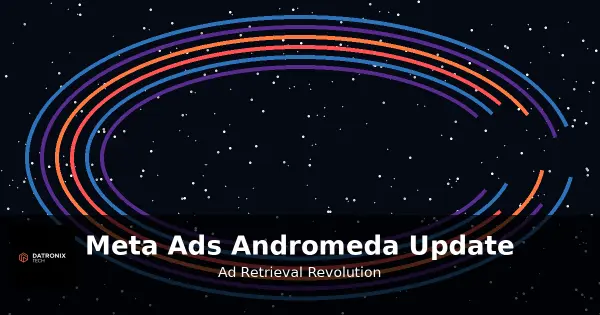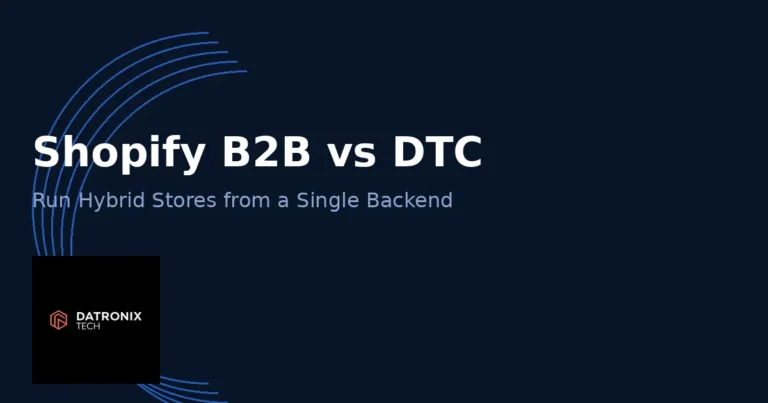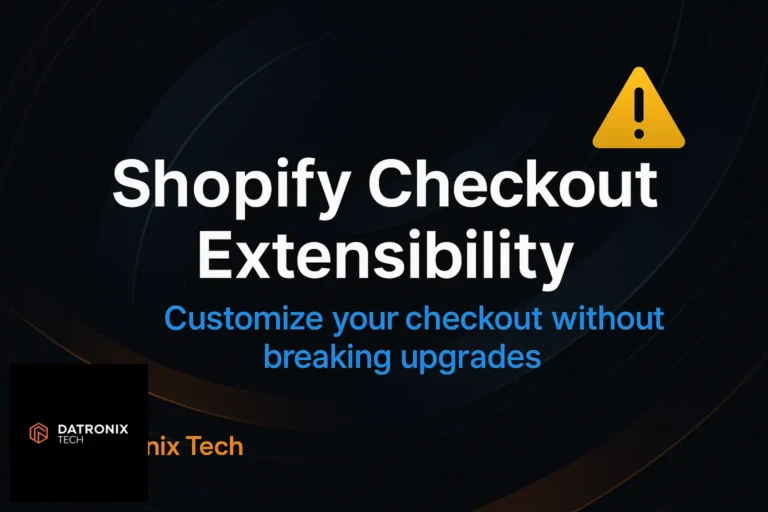The landscape of digital advertising is changing rapidly, and Meta (formerly Facebook) is at the forefront. In late 2024 and 2025, Meta rolled out a major update to its advertising infrastructure called Andromeda a next‑generation retrieval engine designed to supercharge Advantage+ automation and deliver more personalized, effective ads. This blog examines what Andromeda is, how it works, the benefits and drawbacks for advertisers, and how to adapt your campaigns to the new system.
What Is the Andromeda Update?
Andromeda is a proprietary machine‑learning system for ad retrieval. It powers the first stage of Meta’s multi‑step ad recommendation process by selecting a few thousand relevant ads from tens of millions of candidates. Previous systems used multiple isolated models and rule‑based heuristics, which limited personalization and slowed the adoption of new AI innovations. Andromeda reimagines this with deep neural networks co‑designed for the NVIDIA Grace Hopper Superchip to maximize parallel processing and learn higher‑order interactions between users and ads.
According to Meta’s engineering team, Andromeda delivers a step‑function improvement in performance. The system achieves roughly a 6 % recall improvement in the retrieval stage and an 8 % improvement in ad quality for selected segments. Combined with the Advantage+ suite’s automation of audience targeting, budget allocation and creative generation, Andromeda enables advertisers to reach the right users faster and more efficiently.
Why Andromeda Matters for Advertisers
Meta’s move toward automation is designed to democratize advanced ad performance and streamline campaign management. With Andromeda and the Advantage+ suite fully integrated for sales, app promotion and lead generation, AI handles many decisions previously left to media buyers: budget distribution, bid adjustments, audience targeting and even creative testing.
The update arrives alongside new AI creative tools. Meta reports that advertisers using image generation tools within Advantage+ see an average 22 % increase in return on ad spend (ROAS). More than a million advertisers used Meta’s generative AI tools to create over 15 million ads in a single month. Businesses that combine these tools with Advantage+ experienced up to a 7 % boost in conversions.
How Andromeda Works: Under the Hood
Hierarchical Indexing for Exponential Creative Growth
One of Andromeda’s key innovations is a hierarchical indexing system that scales to the growing volume of ad creatives. As generative AI tools help advertisers produce thousands of variations, the retrieval engine must quickly filter and rank them. Andromeda introduces efficient indexing to handle this exponential growth, maximizing the performance of the retrieval stage and ensuring more relevant ads reach each user.
Deep Neural Networks Built for the Grace Hopper Superchip
Andromeda uses a custom deep neural network with increased compute complexity, optimized for the NVIDIA Grace Hopper Superchip. This hardware–software co‑design allows the model to learn higher‑order interactions between people and ads, improving personalization and throughput. The system reduces rule‑based components and instead optimizes end‑to‑end performance across retrieval, ranking and delivery.
Faster Retrieval & Better Personalization
By streamlining the retrieval process and harnessing improved hardware, Andromeda reduces latency and increases recall. Meta’s technical briefings highlight that the system speeds up ad delivery and optimizes relevance at scale. Advertisers can expect faster response times and improved ad quality metrics, leading to higher chances of reaching people most likely to convert.
Pros and Cons of Andromeda
Pros
Efficiency & scale: Automation means less manual campaign tweaking and more time to focus on strategy. Even small advertisers gain advanced targeting without complex setup.
Advanced creative capabilities: AI tools generate multiple variations of your images and videos, allowing you to test diverse creatives and discover what resonates.
Improved delivery efficiency: Rapid matching of ads to users increases relevance and conversion potential.
Higher ROAS and conversion rates: Early adopters of Advantage+ and Andromeda report up to a 22 % uplift in ROAS and 7 % more conversions.
Cons
Loss of granular control: The more you rely on AI automation, the fewer manual adjustments you can make to targeting and bidding. Niche or luxury brands that require tight control may be uneasy with the trade‑off.
Brand consistency risks: AI‑generated assets might not always match your brand voice, potentially creating inconsistency.
Extra costs on iOS: When boosting posts within Instagram or Facebook apps on iOS, advertisers face a 30 % service fee due to Apple’s in‑app purchase policies. Scheduling ads from a desktop avoids this fee.
How to Adapt Your Advertising Strategy
1. Balance Automation with Manual Control
Leverage Advantage+ and Andromeda for efficiency, but don’t abandon manual campaigns. A hybrid approach allows you to run automated campaigns alongside tailored ad sets, preserving control over specific audiences and creative.
2. A/B Test AI‑Generated Creatives
Run experiments that pit traditional human‑designed creatives against AI‑generated variations. Measure engagement, conversion quality and ROAS to find the optimal mix. Keep human oversight to ensure your brand identity remains consistent.
3. Avoid iOS In‑App Boosting Fees
Schedule and manage ads on a desktop or non‑iOS device to dodge Apple’s 30 % fee on in‑app boosting. This small change can save significant budget over time.
4. Feed the AI with Quality Data
Ensure your product catalogs, audience lists and conversion events are clean and accurate. High‑quality inputs help Meta’s algorithms optimize for the right outcomes.
5. Monitor, Measure and Adjust
Use Meta’s reporting tools to track not only overall campaign performance but also metrics like lead quality and customer engagement. When performance dips, reintroduce manual controls, adjust budgets or refine audiences.
6. Stay Informed and Keep Testing
Platform updates roll out quickly. Stay up to date by reading Meta’s Business Help Center, industry newsletters and case studies. Test new features on a small scale before committing large budgets.
FAQ: Andromeda and Your Ads
Is Andromeda a new campaign type? No. Andromeda is an infrastructure upgrade that powers ad retrieval behind the scenes. You’ll see its benefits when you run Advantage+ or AI‑driven campaigns, but there’s no separate Andromeda campaign objective.
Do I have to enable Andromeda? Andromeda is part of Meta’s ads system. You don’t need to enable it; it automatically improves retrieval and delivery on supported campaigns.
Will manual campaigns disappear? Manual campaigns aren’t going away. You can still set budgets, choose placements and define audiences. However, Meta encourages advertisers to use Advantage+ features for better performance.
How do I know if Andromeda is working? Watch metrics like relevance score, ROAS and conversion rates. Improvements in these areas may indicate Andromeda’s impact.
Is Andromeda only for large advertisers? No. The update aims to democratize advanced targeting and creative optimization. Small businesses can benefit just as much by leveraging Advantage+ and AI tools.
Conclusion
Meta’s Andromeda update is a significant leap forward in the company’s AI‑driven advertising strategy. By redesigning the retrieval engine with hierarchical indexing and custom neural networks, Meta delivers more relevant ads faster. Advertisers who embrace the update can enjoy higher efficiency, improved ad quality and better returns. However, it’s important to balance automation with manual oversight, ensure brand consistency and stay informed about costs and platform changes. Need help navigating Andromeda and Advantage+? Datronix Tech offers comprehensive paid ads management—from creative strategy to AI‑powered optimization. Reach out to us for a personalized consultation.





